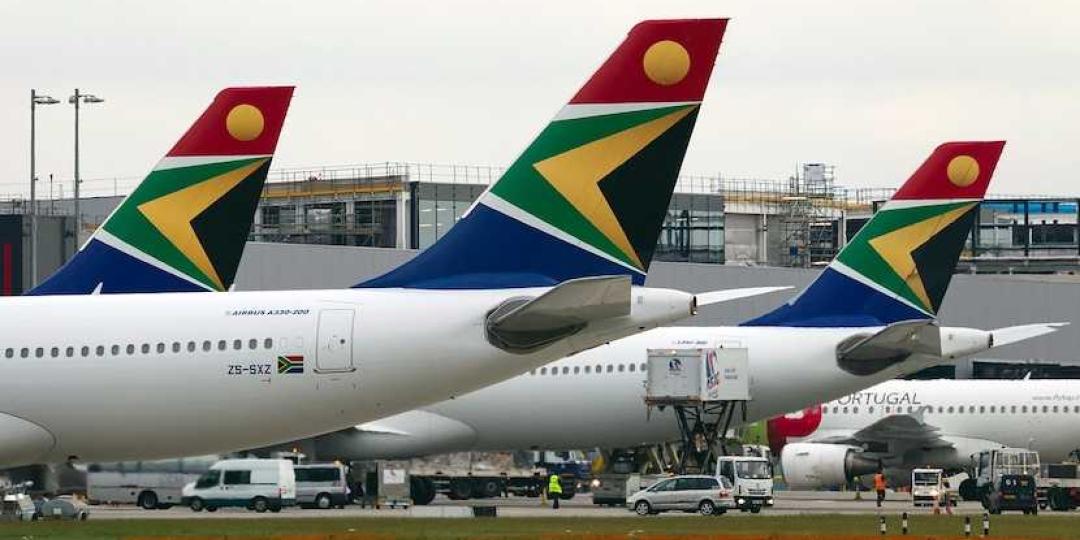A restructured SAA could start domestic operations as early as this month in Level 3 with full domestic operations in January 2021, followed by regional and then international operations under Level 1, as market and passenger demand allow.
This is according to SAA’s Business Rescue Plan (BRP), published late on Tuesday night by SAA business rescue practitioners, Les Matuson and Siviwe Dongwana, who say: “The proposed restructure envisages an airline that commences with flights in the near future as the COVID-19 lockdown eases and domestic air travel begins again”. They add: “The restart of the airline is projected over a period of eight months between June 2020 and January 2021. The operations of the airline will commence with domestic travel under Levels 3 and 2, and with international travel anticipated to restart under Level 1. The airline will slowly ramp up operations and increase its fleet of aircraft in line with the development in the aviation sector.”
According to the plan, the current company structure of the SAA Group will remain as it is during the restructuring, but may be optimised after the implementation of the BRP. This means the SA government will remain the sole shareholder of the company.
The BRP envisages that SAA will fly mainly regionally into Africa and service only a limited number of international and domestic routes. International routes to be retained would be: Washington DC (via Accra), New York, Perth (fleet dependent) Frankfurt and London. Domestic routes would be Cape Town, Durban and Port Elizabeth. Regional routes would include Accra, Blantyre, Dar es Salaam, Gaborone, Harare, Kinshasa, Lagos, Libreville, Lilongwe, Livingstone, Luanda, Maputo, Nairobi, Mauritius, Ndola, Victoria Falls and Windhoek.
The BRP proposes that SAA’s fleet be cut from 44 to 26 aircraft by January 2021, retaining only 10 small narrow bodies, nine narrow bodies and seven wide-bodies. “The fleet strategy for the restart of domestic travel will see the airline conducting a thorough comparative analysis to ensure that the best deal is obtained,” the rescue practitioners say. They say SAA would terminate all current aircraft leases and would enter into new contracts as and when regional and international travel resumes.
Funding
A condition of the implementation of the BRP is that government raises immediate, medium- and long-term funding for the proposed restructuring, starting with a R2,8bn working capital injection to restart business operations (R2bn in restarting costs and R800m to refund post-commencement creditors). Government would also have to fund R2,2bn in retrenchment costs; and R16,4bn to repay lenders, including R3,5bn plus R168m in interest to be paid to the Development Bank of SA in the 2020/21 fiscal year. Other lenders/banks would be repaid over three years.
Government would also have to fork out R3bn to honour unflown tickets bought by customers or any vouchers they received; R600m over three years to refund general concurrent creditors, and R1,7bn over three years to aircraft lessors.
Another condition of the BRP is the finalisation of an agreement with employees/trade unions on the staff headcount and revised terms of employment. The plan anticipates that, initially, 1 000 employees would be retained under new terms and conditions of employment. The restructured company would support a social plan as envisaged by the Leadership Compact Forum between trade unions and the Department of Public Enterprises (DPE). The rest of the employees would be retrenched. As the operations of SAA stabilise and eventually increase, it is anticipated that the company would employ more staff again. Preference would be given to former SAA employees subject to competence, skills and suitability.
The BRP anticipates that the restart of domestic travel will be on a step-up basis, with 1 000 staff required from June to August 2020, with final staff numbers increasing to 2 892, in accordance with market and passenger demand.
The BRP is also conditional on the following: Approval by the Ministers of Finance and Public Enterprises; written confirmation from National Treasury and DPE to providing the requisite funding to be received from both by July 15. Government also has to confirm that its guarantees issued to lenders will continue in full until lender claims are discharged as set out in the plan.
Once the plan approved, a receivership would be set up to deal with creditors’ claims and distributions. The business practitioners would file a notice of substantial implementation, thereby discharging the company from business rescue.
























